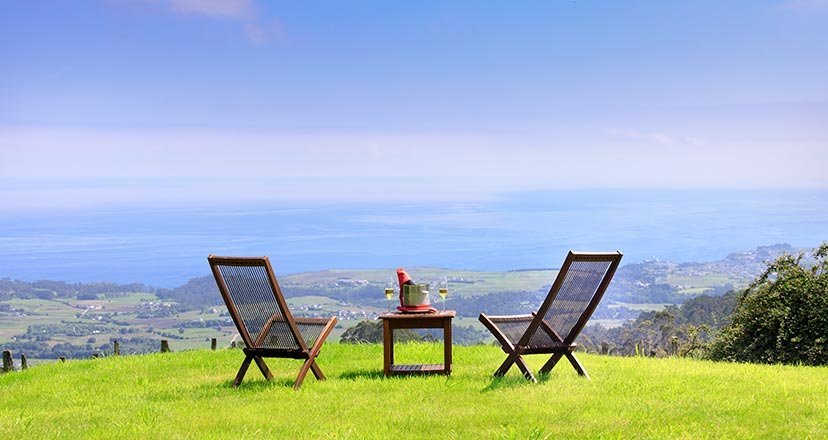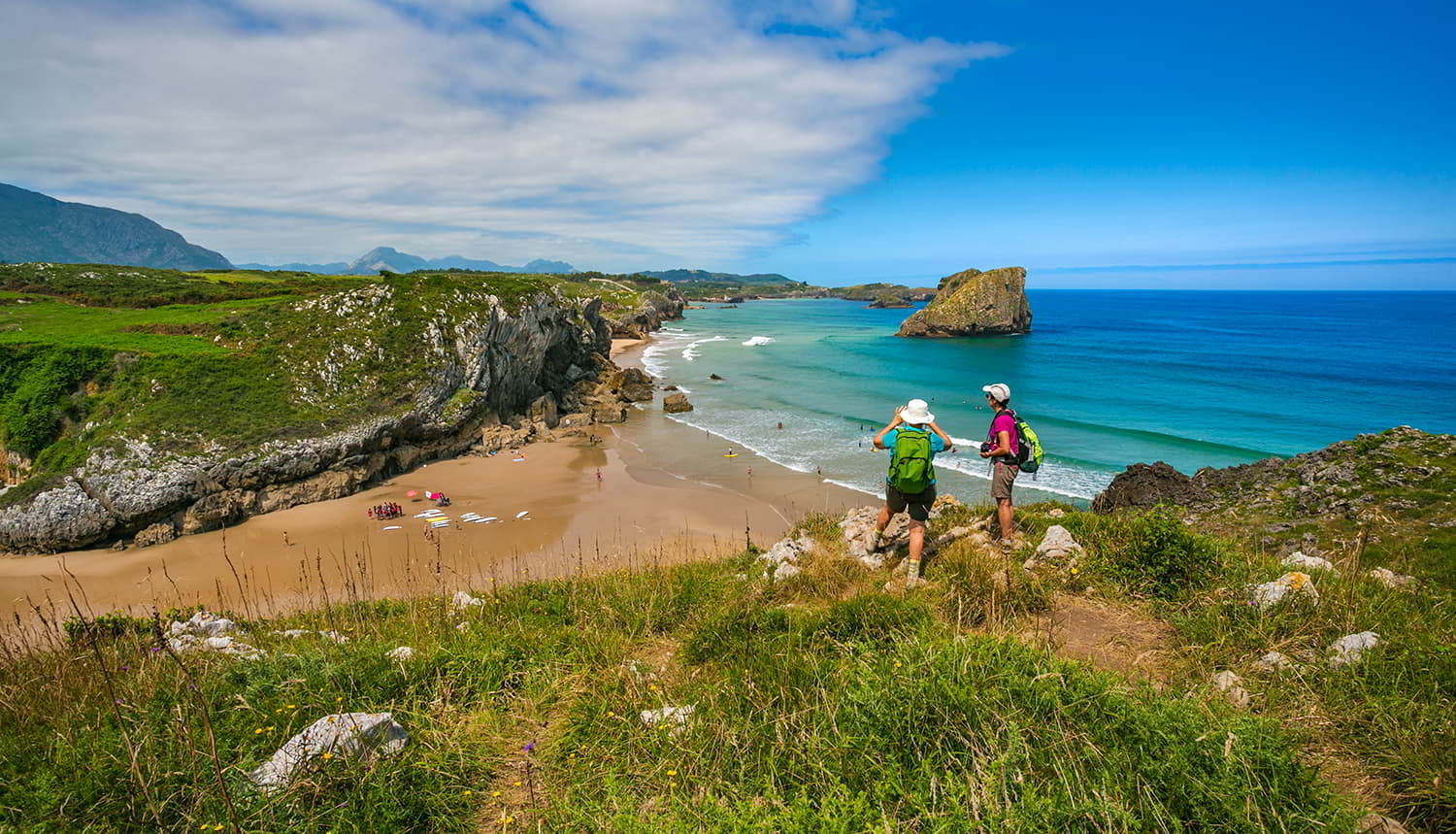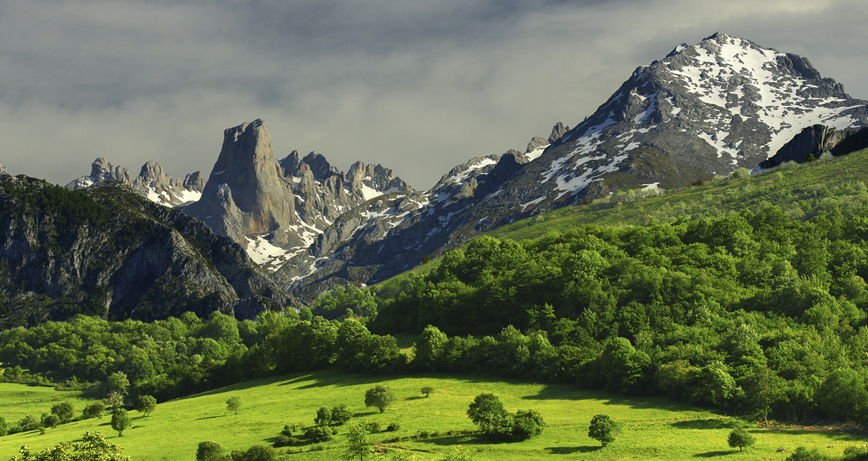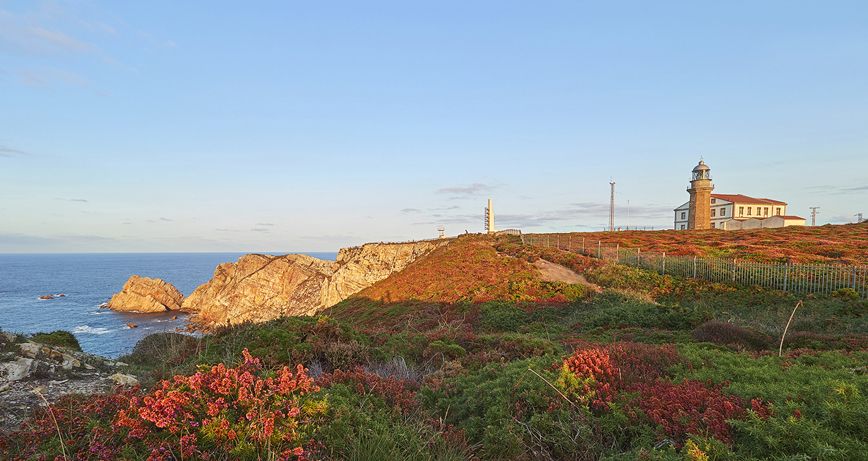Back Travel guide to Asturias
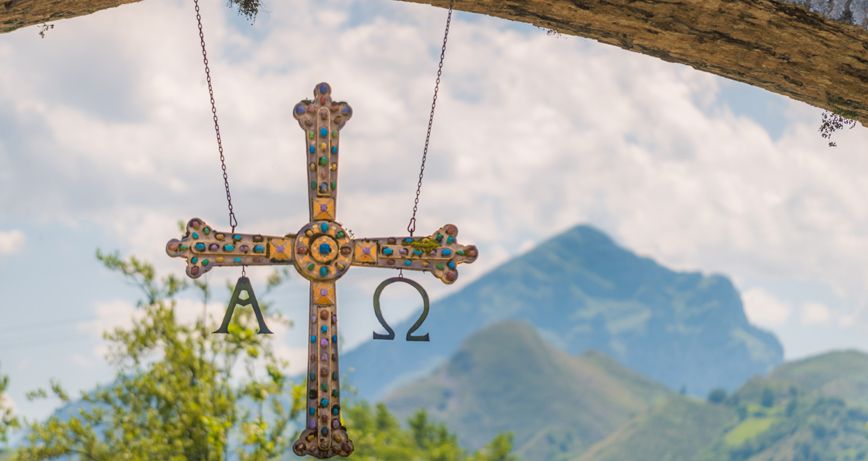
Travel guide to Asturias
Asturias has 15 tourist regions that are 15 destinations at your disposal to enjoy without limit, with a wide and different horizon.
Asturias is made up of a multitude of destinations that offer an infinite number of options for a different and always rewarding leisure experience. Each tourist region is a world of possibilities and attractions, making Asturias a paradise that will exponentially multiply your holiday plans in a prodigious way.
15 tourist regions, 15 universes at your disposal to enjoy without limit and with a wide and different horizon.
A journey through each and every one of them will make your logbook a real reference work for travellers eager for new sensations and stories.
Let's get started!
Oscos-Eo, a Biosphere Reserve overlooking the Bay of Biscay
Of the 7 Biosphere Reserves, Oscos-Eo is the only one that overlooks the Bay of Biscay, and it does so in luxury, with charming fishing villages such as Castropol and Figueras, and beaches such as Arnao or Penarronda.
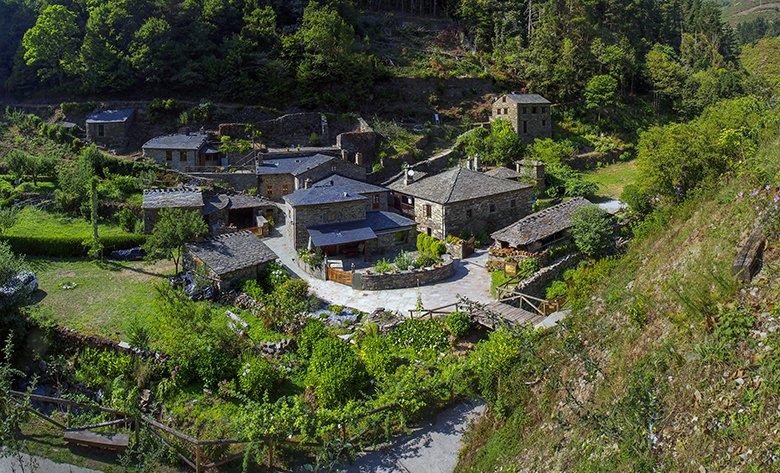
A pioneer of rural tourism in Spain, specifically in Taramundi, this region is a great ethnographic reserve with villages such as Os Teixóis, and the Museum of Cutlery and the Museum of Weaving, or the Museum of Mills, all of them in the council of Taramundi.
On the other hand, the other great ethnographic and cultural reserve of this region is Los Oscos, with the ethnographic complex of Mazonovo and the Museo Casa Natal del Marqués de Sargadelos, in Santa Eulalia de Oscos; the Palacio de Mon, in San Martín de Oscos, and the Monastery of Santa María, in Villanueva de Oscos.
Other resources such as the Seimeira waterfall, in Santa Eulalia de Oscos; the Railway Route in San Tirso de Abres, or the Camino de Santiago de la Costa itself, complete a wide range of possibilities.
This is the westernmost region of Asturias and is made up of seven municipalities: Castropol, San Martín de Oscos, San Tirso de Abres, Santa Eulalia de Oscos, Taramundi, Vegadeo and Villanueva de Oscos.
Here is more information about what to see and do in the Oscos-Eo Region!
The Navia Historical Park, castreño and fluvial
It is the largest open-air cultural theme park in Asturias. With an orography painted by the Navia and its tributaries, the Navia Historical Park represents, like no other region, the Asturias of the castro. Villages, mountains, rivers, fertile valleys, imposing reservoirs, a paradise for bees, and a place where there is a succession of incredible fishing villages. You can enjoy all this and more in this region.
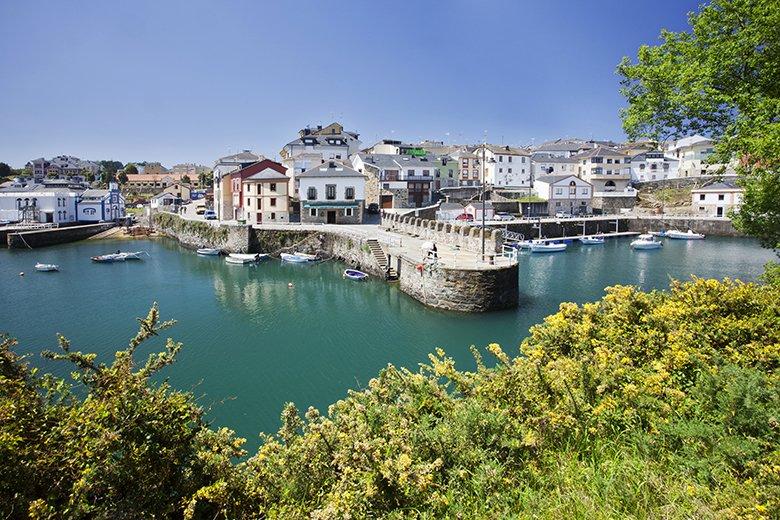
Ortiguera, Porto/Viávelez, Navia, Puerto de Vega and Tapia are the fishing villages located in the Navia Historical Park, which also has such well-known beaches as Santa Gadea, Penarronda, Anguileiro and Frexulfe.
On the other hand, notable forts such as Pendia, Coaña, Mohías, Chao Samartín or El Castelón are located in this territory. Not forgetting the Ethnographic Museum of Grandas de Salime, or unique villages such as Argul or A Paicega.
The Navia Historical Park, located in western Asturias, borders Oscos-Eo and the Vaqueira region, and includes the municipalities of Boal, Coaña, El Franco, Grandas de Salime, Illano, Navia, Pesoz, Tapia de Casariego and Villayón.
Here is more information on what to see and do in the Navia Historical Park!
Vaqueira region, the kingdom of the "brañas".
Marked by the history and culture of the vaqueiros de alzada - a nomadic social group dedicated to livestock farming - from whom it takes its name, this region brings together coast and inland, mountains, sierras, valleys, rivers and lush forests.
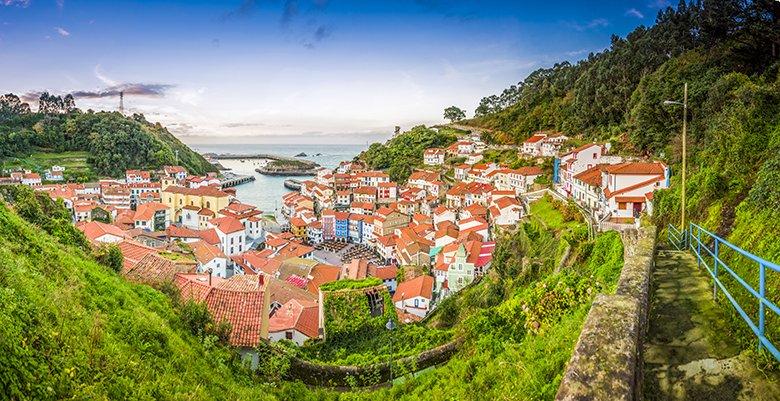
The Vaqueira region is home to such attractive and renowned fishing villages as Luarca/Ḷḷuarca and Cudillero, as well as such famous capes as Busto and Vidio. Not forgetting the Barayo Nature Reserve and the Esva Gorges. And inland, places such as Salas, Cornellana, Tinéu and Pola de Allande, closely linked to the Primitive Way of St. James.
There are also villages such as Navelgas and Tuña, closely linked to the Gold Route of the Roman Empire.
This vast region, which for centuries was traversed by the vaqueiros, extends over five councils in western Asturias: Allande, Cudillero, Salas, Tineo and Valdés. Some of them, such as Tineo, Allande and Valdés, are among the largest in the whole of Asturias.
Here is more information on what to see and do in the Comarca Vaqueira!
Fuentes del Narcea, when green takes the form of vineyards and minerals
This region in the south-west of Asturias is a large Nature Reserve - Fuentes del Narcea, Degaña and Ibias - which has also been declared a Biosphere Reserve. In the midst of this vegetable paradise, there is a patch of forest that is unique in the whole of Europe: the Muniellos Forest (considered to be the largest oak forest on the continent).
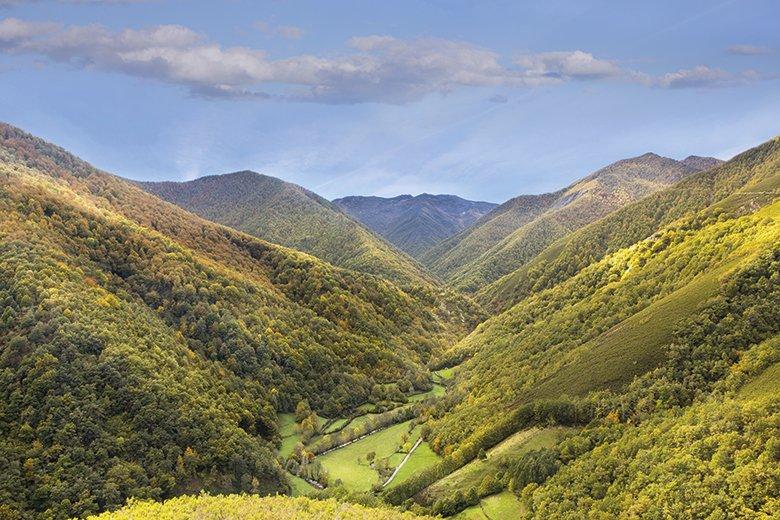
There are many beauties to be found in the area, both natural and cultural. Among them are the Monastery of Corias, today converted into a Parador Nacional; the Wine Museum in Santiso, or La Guarida del Cunqueiro in Degaña.
And of course, villages such as Bisuyu - birthplace of the playwright Alejandro Casona -, Xedré and Tormaleo (with a great mining tradition) are also a must, as well as the striking landscapes of castros and pallozas in Ibias.
The mountain passes of Connio, Zarréu and Leitariegos are also mythical. And the backdrop is always the heroic vineyards hanging from the hillsides, and the bears that inhabit its mountains and forests.
This region occupies a large territory in the extreme southwest of Asturias, and is made up of the councils of Degaña, Ibias and Cangas del Narcea. The latter is the largest in the Principality of Asturias.
Here is more information about what to see and do in the Fuentes del Narcea region!
Lower Nalon, with a regal air
The Asturian monarchy wrote some glorious pages of its history in the Bajo Nalón, and the region still conserves the royal air of yesteryear. It was King Silo who established the court in Pravia, turning it into a monumental town, which still retains that mark.
So a stroll through the town of Pravia is a real history lesson, and a haven of peace, with the murmur of the river Nalón nearby.
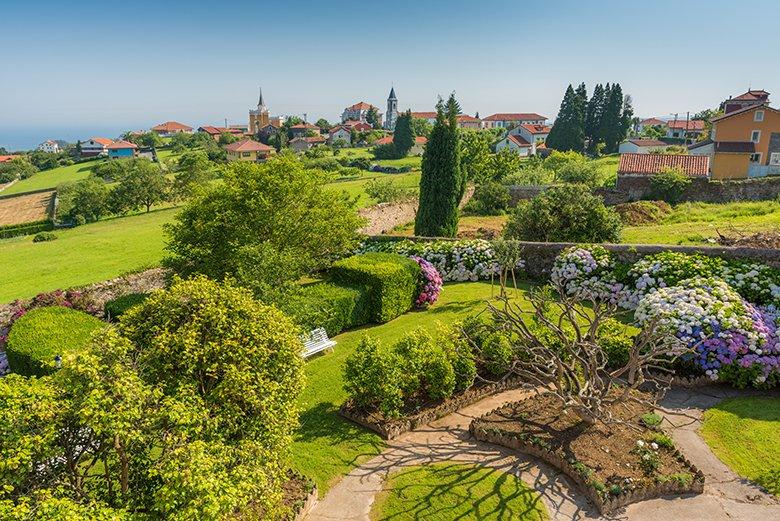
There are many surprises in store for you in this region, where you will find villages with spectacular examples of Indian architecture, such as Somao; others well known for the quality of the produce from their market gardens, such as Riberas, and some at the mouth of the river Nalón, such as L'Arena and San Esteban.
And if it is a question of enjoying routes, one of the most beautiful and well-known is that of Los Miradores and the Chapel of the Holy Spirit. Of course, special mention should be made of such beautiful beaches as Aguilar and Los Quebrantos.
In short, the Bajo Nalón region is a territory defined by the mouth of the river Nalón, which includes the councils of Muros de Nalón, Pravia and Soto del Barco.
Here is more information on what to see and do in the Bajo Nalón region!
Camín Real de la Mesa, the route of an Empire
This region is deeply marked by its nature as a crossroads of historic trails: the Real de la Mesa (from which it takes its name), the Camino de Santiago, and more recently, the Senda del Oso.
Home to brown bears and with two Biosphere Reserves in its geography - Las Ubiñas-La Mesa and Somiedo - this area of Asturias was the route and dream of the Roman Empire, which coveted the riches of its subsoil, and admired the kindness of its people.
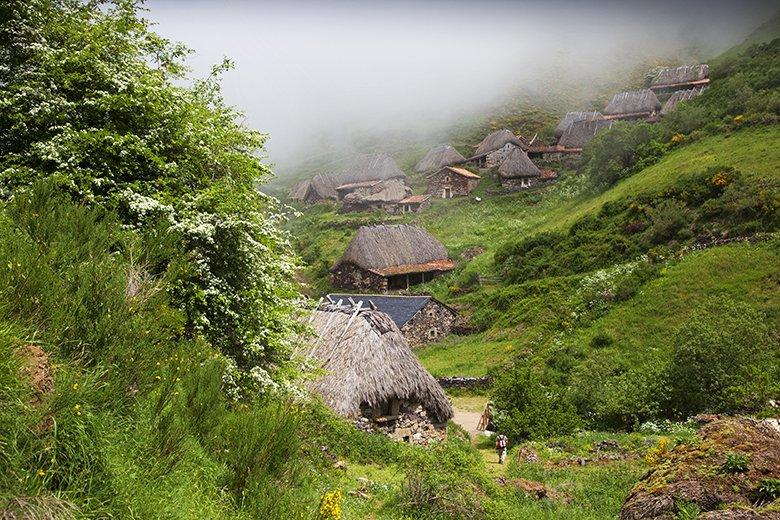
There are many and varied resources to seduce the visitor. For example, Somiedo with its five valleys, and its brañas and villages, among others Valle de Lago and Villar de Vildas, without forgetting its mountain passes such as La Farrapona. Also Quirós with its climbing school and beautiful villages such as Bermiego and Chanuces. Special mention should be made of Teverga, its collegiate church and its Prehistoric Park. And what can we say about the beauty of the Senda del Oso or the village of Banduxu?
Pre-Romanesque art also makes a stellar appearance in Santo Adriano de Tuñón and San Pedro de Nora. And prehistory reaches its zenith in the Cueva de La Peña in Candamo.
For its part, the village of Grau/Grado offers one of the oldest markets in Asturias, every Sunday and Wednesday. And Belmonte seduces with its Roman forge, its Aula del Oro and its braña de Cuevas.
Ten councils, including some of the smallest in Asturias, make up this central region: Belmonte de Miranda, Candamo, Grado, Las Regueras, Proaza, Quirós, Santo Adriano, Somiedo, Teverga, and Yernes y Tameza.
Here is more information about what to see and do in the Camín Real de la Mesa!
Comarca Avilés, a permanent discovery
The Avilés region will be a great discovery for you, precisely because it is a miscellany of very interesting options.
If you like sports, especially canoeing and rowing, the Trasona reservoir and its Sports Technification Centre is a place to visit. If you are thinking of a day at the beach, Salinas is an ideal place, or Arnao, where you can also complete the day with a visit to what was the first underwater mine in Spain, now a museum, and which is located in this village in Castrillón.
If you are seduced by river water, in Illas, specifically in Sollovio, you will find the first river pool in Asturias, and without going very far, in this same municipality, one of the tastiest blue cheeses you can try is made, the famous La Peral.
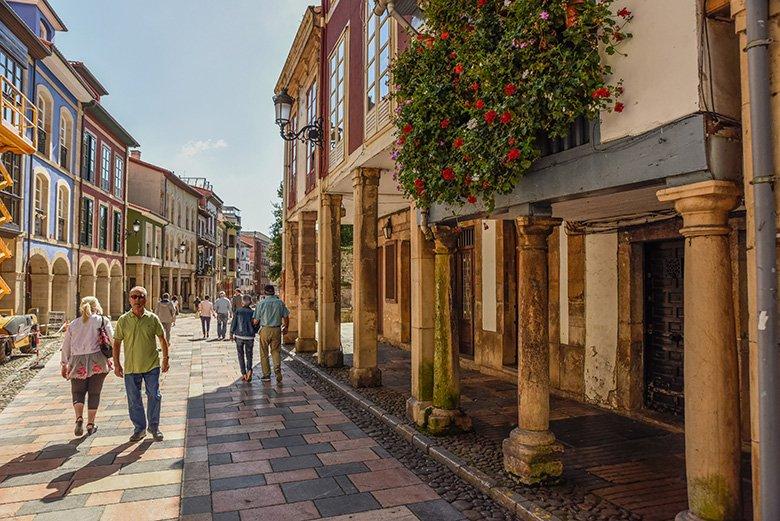
And of course Avilés, the famous Villa del Adelantado, is a continuous source of surprises with its splendid historic quarter, one of the best preserved in northern Spain, or with its avant-garde Niemeyer Centre, the last great work of Oscar Niemeyer in Europe.
Four councils make up this region: Avilés, Corvera, Illas and Castrillón.
Here is more information on what to see and do in the Avilés Region!
The Nora region: mining, pork and festive
A large coal seam runs through its bowels, the one that made it one of the most buoyant mining and industrial areas in Europe. Underground galleries, mountains and the great central plain of Asturias combine in this festive region, where sausages of great tradition and quality are produced.
In this land, the cattle, the cheeses and the vegetable garden are of the best, so you will not only enjoy yourself at the table, but also contemplating a well cared for and ecological environment.
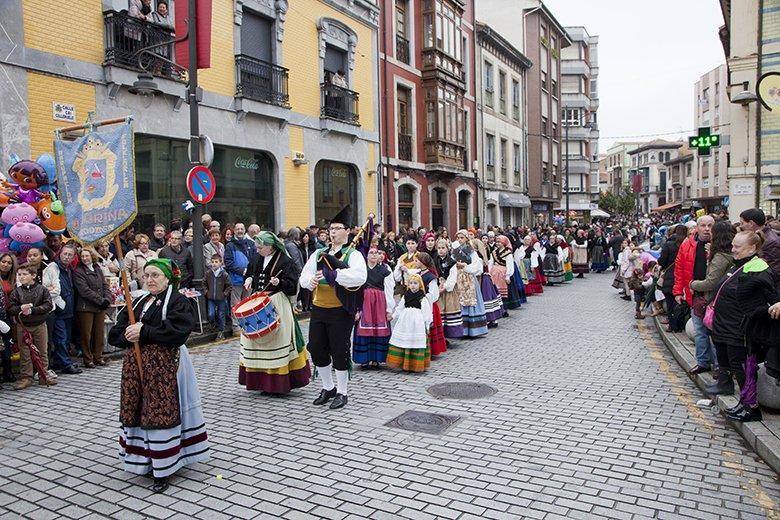
And when it comes to partying, there is no better place than this region. Les Comadres, the Huevos Pintos, and the Carmín de la Pola - all of them in La Pola Siero -; the Picadillo and Sabadiego festival, in Noreña -, or the Ex-Conxuraos festival, in Llanera, are some fun and very tasty events.
If you like cultural heritage, the historic quarter of Noreña or the palaces of Llanera are attractions not to be missed.
And if you love coal and its history, the Jovellanos Mining Route is one of the unmissable itineraries to get to know the mining town of Siero and the history of Asturias.
In addition, the Fernando Alonso Museum and circuit, in La Morgal, is another irresistible date for motor sport lovers.
Three councils make up this region: Siero, Llanera and Noreña.
Here is more information on what to see and do in the Nora region!
Oviedo, the Jacobean heart of Humanity
The city of Oviedo/Uviéu - capital of Asturias - and the rest of the council to which it gives its name, are the true Christian and Jacobean heart of Europe and the world. Because it was precisely in the city of Oviedo where an Asturian monarch, Alfonso II, had the happy idea of creating the Way of St. James.
Over the centuries, the Way of St. James became one of the most important spiritual and cultural itineraries of humanity. So in the city of Oviedo/Uviéu you will be able to contemplate the main scenes of that great idea: the Cathedral of San Salvador and the Holy Chamber, and the entire historic centre of this splendid and welcoming city.
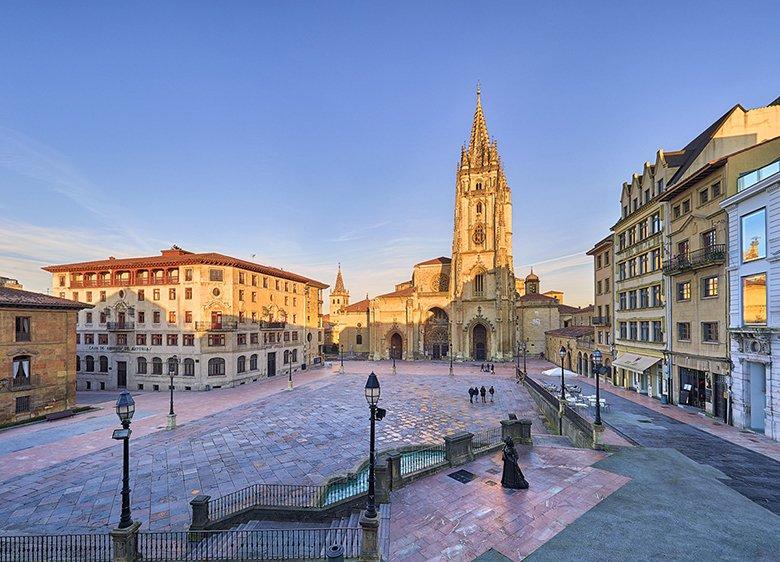
In addition, a leisurely stroll around this capital will leave you with images of the Fontán market, the Archaeological Museum and the Fine Arts Museum. And no one can leave Oviedo without climbing Mount Naranco and contemplating the pre-Romanesque monuments of San Julián de los Prados (Santullano), Santa María del Naranco and San Miguel de Lillo.
Likewise, the Campoamor Theatre, which for decades has been the venue for the Princess of Asturias Awards ceremony, is another of the city's relics.
And of course, rural Oviedo, with wonderful villages such as Llimanes, Faro, Las Caldas and a long etcetera, has a lot of charm, and many trails and routes to do.
Here is more information about what to see and do inOviedo/Uviedo and its council!
Central Mountains, ideal for sport and to look back in history
The Central Mountains is a region marked and defined by communication routes since time immemorial, to such an extent that the Romans traced historical routes that connected the Cantabrian Mountains with the Castilian plateau.
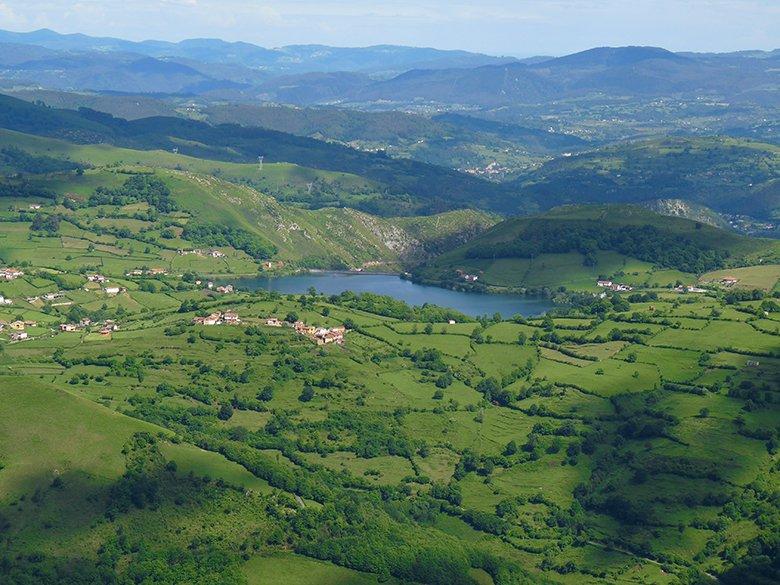
The peaks and mountain passes are another of its hallmarks, as well as its scenic delights. As could not be otherwise, the Way of St. James also passes through here, and the relics that have been kept in Oviedo Cathedral for over a thousand years have passed through here.
And the Pre-Romanesque, with the excellent example of Santa Cristina de Lena, also makes its stellar appearance in this region.
In short, this is an area that has a wide variety of everything: two ski resorts, Valgrande-Pajares, which also has a programme of summer activities, and Fuentes de Invierno; a cycling ring (that of the Central Mountains); industrial towns such as Bustiello, or villages that are an ethnographic reserve such as Güeñu/Bueño, as well as mythical mountain passes such as l'Angliru, La Cobertoria, and Coto Bello, or imposing mountain ranges such as the Sierra del Aramo.
Mining - already pre-Roman - and industry have sometimes shaped these beautiful landscapes, where a traditional cheese, afuega'l pitu, is also produced, especially in the area of Morcín.
Six councils make up the Central Mountains: Aller, Lena, Mieres, Morcín, Ribera de Arriba and Riosa.
Here is more information on what to see and do in the Central Mountains!
Cabo Peñas, the infinite charm of the north
This is the most northerly region of Asturias and is located in the centre of the almost four hundred kilometres of the Asturian coast, right between two of the best known cities in the Principality, Gijón/Xixón and Avilés.
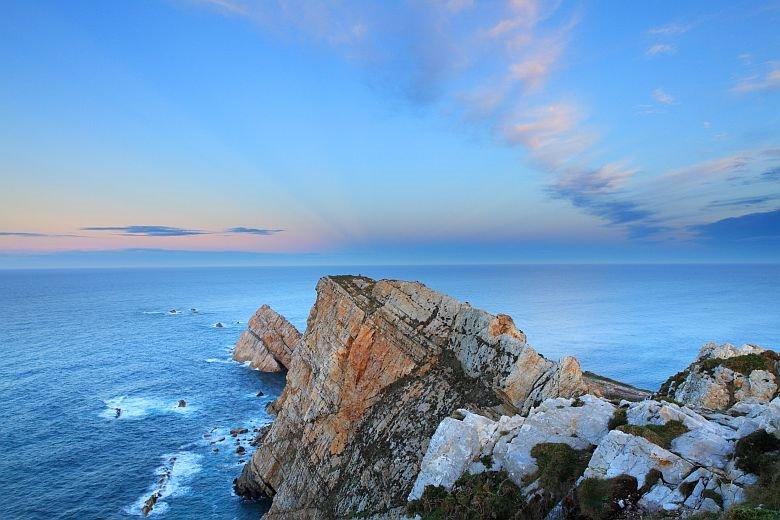
It is home to two of the most famous fishing villages with the most personality of all those in Asturias: Candás and Lluanco/Luanco. Candás has a great canning tradition, and a good example of this is its Museum of Canning. Lluanco/Luanco has a Maritime Museum, which is one of the oldest and most interesting in Asturias.
Some of its summer events are also famous, such as the Sardine Festival or the Pipe Band Festival in Candás. Or the Lluanco/Luanco Beach Tennis Tournament, which after several years without being held, will be held again next year. Just as tasty and much celebrated are the marañuelas (typical sweets), which you can buy in both towns.
Obviously, you cannot leave this region without a visit to Peñes, the most northerly point of Asturias, and a Protected Landscape due to its exceptional natural beauty. There you can enjoy the cape, the lighthouse, the landscape and also its Visitor Reception and Marine Environment Interpretation Centre.
Two councils make up this territory: Carreño and Gozón.
Here is more information on what to see and do in the Cabo Peñas Region!
Gijón, historic, cosmopolitan and a lot of fun
The city of Gijón/Xixón and its council form one of the most complete and harmonious regions in the whole of Asturias.
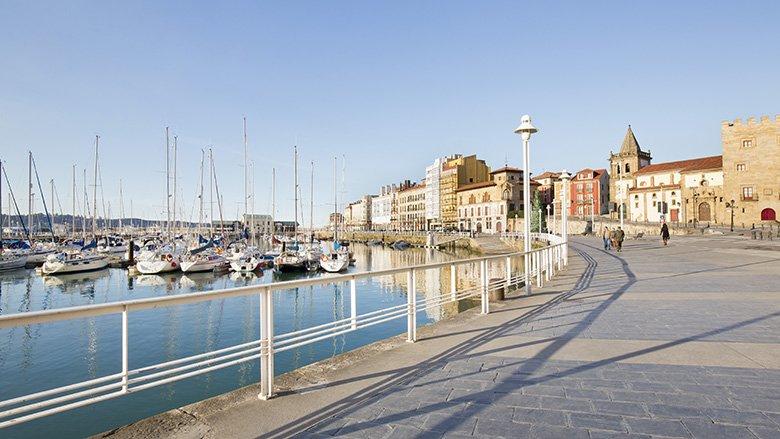
Gijón/Xixón is, due to its location right on the coast, a seaside resort and a beach destination. It is ideal for all kinds of outdoor sports. Furthermore, the Villa de Jovellanos has an avant-garde air and atmosphere, which makes it different. Gijón is cosmopolitan, festive, cultured and hospitable. So you will never be short of an event or a party to take part in, or a special moment to share. Likewise, cider and good food are two daily touches in a city that is perfect for leisure.
Both Gijón/Xixón and the rest of the council have Roman and pre-Roman remains, as well as a notable legacy of mining and metallurgy. In short, they paint a pleasant picture of trends and histories.
The Atlantic Botanical Garden, La Laboral City of Culture and the Aquarium are some of the unmissable visits in the city. And in the surrounding area, in the heart of rural Gijón, villages such as Caldones, Deva or La Camocha offer absolutely memorable spots.
Places like La Campa Torres or Veranes show you the past and allow you to contemplate spectacular views, as well as the Providencia area, a real balcony overlooking the Bay of Biscay.
Here is more information on what to see and do inGijón/Xixón and its council!
Nalón Valley, a perfect combination of nature and culture
The Nalón Valley, with its past of mining and industry, of social movements and technological revolution, is a culturally rich territory, which wisely combines all the knowledge and vestiges linked to this intense past with unspoilt nature, such as that of the Redes Natural Park, in the Alto Nalón, declared a Biosphere Reserve.
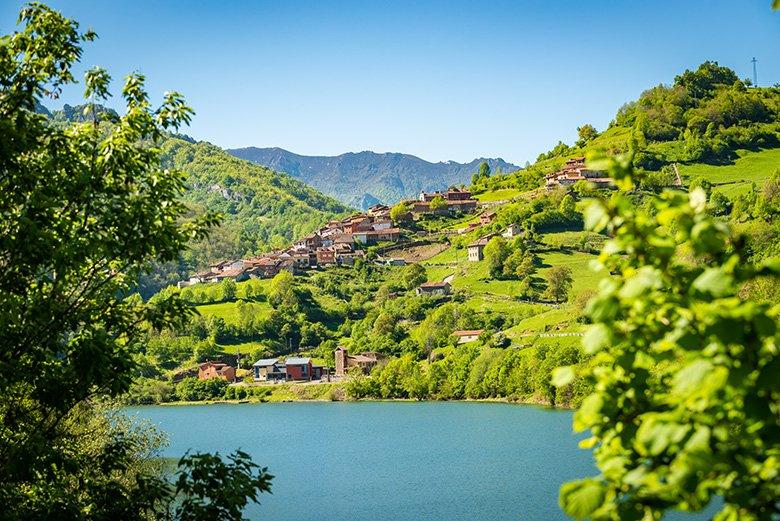
That is why a walk through the Redes Natural Park will leave thousands of images of routes, landscapes and fascinating stories in your mind's eye. As well as dozens of beautiful villages in both Caso and Sobrescobio. An outstanding example is the case of Soto de Agues, a real gateway to the famous Ruta del Alba.
And when it comes to museums, this region is well served: from the Casa del Agua in Rusecu/Rioseco (Sobrescobio), or the Museo de la Madera in Veneros (Caso), to the Museo de la Minería in L'Entregu/El Entrego (San Martín del Rey Aurelio), or the Ecomuseo Minero de Samuño, in Langreo.
In short, a perfect combination of nature and culture awaits you in the Nalón Valley.
Five councils make up the Nalón Valley Region: Caso, Langreo, Laviana, San Martín del Rey Aurelio and Sobrescobio.
Here is more information on what to see and do in the Nalón Valley Region!
Cider district, the land of orchards and apple blossoms
The Cider Shire resembles a large, lively garden. In reality, it is a real ecological larder where orchards and apple blossom will give you idyllic views.
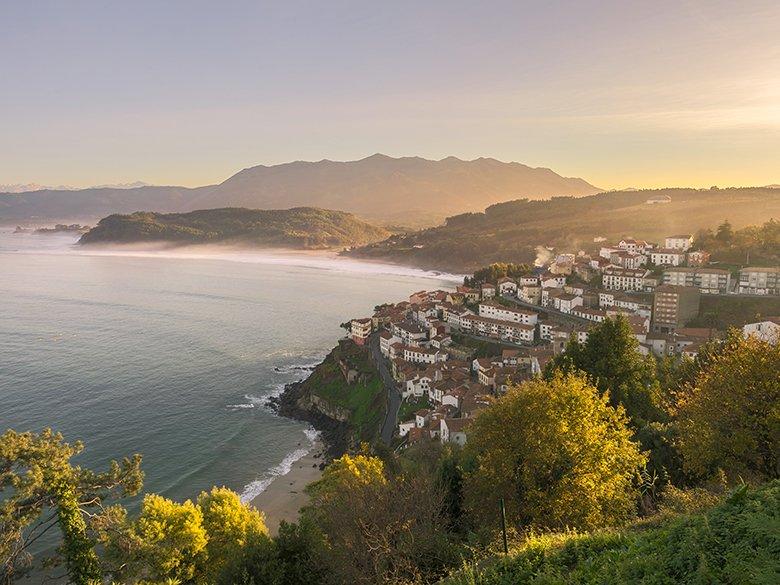
This area of Asturias treasures fishing villages of great beauty and surprising history, such as Llastres and Tazones, as well as one of the most spectacular estuaries - that of Villaviciosa - with the greatest biodiversity in the whole of the Cantabrian coast.
On the other hand, the landing of Charles V in Tazones more than 500 years ago is one of the most festive and recreated episodes in this part of Asturias, not forgetting the tasty Rice pudding festival in Cabranes. The region also has a remarkable network of museums, including the Cider Museum in Nava, the Jurassic Museum in Colunga, the Radio Museum in Bimenes, and the Rural School Museum in Cabranes.
Of course, this area is a paradise for hiking and has very interesting routes such as the windmill route in Villaviciosa, or the Pico Fario route in Sariego. Another natural landmark of great beauty is the Cave of San Pedrín, also in Sariego.
Six councils form part of the Cider Shire: Villaviciosa, Nava, Bimenes, Colunga, Sariego and Cabranes.
Here is more information about what to see and do in the Cider Shire!
Eastern Asturias, the region of the high summits
Eastern Asturias is the great roof of the Cantabrian Sea, because it is home to the high limestone peaks of the Picos de Europa, which a little over a century ago became the oldest National Park in Spain, and today has also been declared a Biosphere Reserve. This same region is also home to another Biosphere Reserve, the Ponga Nature Reserve, a true jewel of Asturian nature.
And if its natural landscapes are prodigious, so is its culture. Among the treasures to be seen in this region are the Royal Site of Cuadonga/ Covadonga, and the town of Cangues D'Onís/Cangas de Onis. The fishing villages of Ribadesella/Ribeseya and Llanes also deserve special mention.
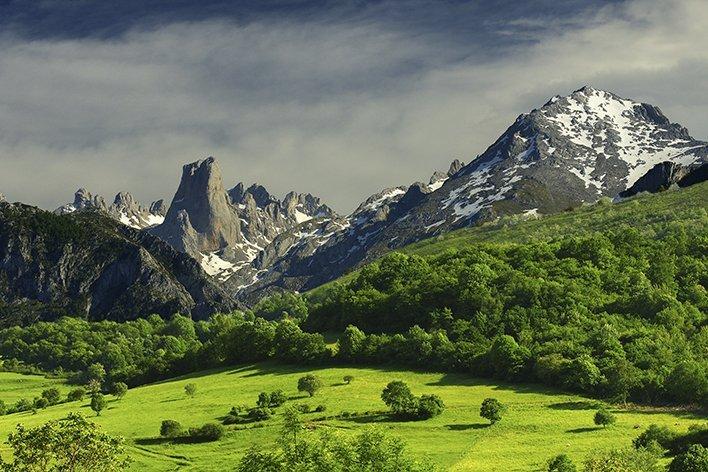
There are also countless villages, towns and places worth visiting. The Exemplary Villages of Asiegu and Colombres, as well as Bulnes, which is unique in that you can reach it by funicular railway, are worthy of special mention.
Cave art is another of the great attractions of this region, which has several World Heritage caves, two of which can be visited: Tito Bustillo, in Ribadesella/Ribeseya, and El Pindal, in Ribadedeva.
Thirteen municipalities make up the easternmost region of Asturias: Amieva, Cabrales, Cangas de Onís, Caravia, Llanes, Onís, Parres, Peñamellera Alta, Peñamellera Baja, Piloña, Ponga, Ribadedeva and Ribadesella.
Here is more information about what to see and do in the Oriente de Asturias region!
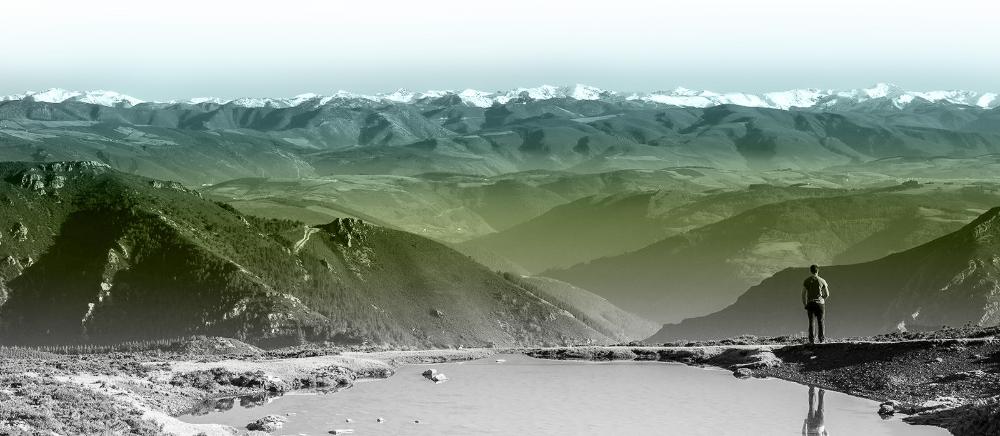
Subscribe to our newsletter and take advantage of offers, discounts, and news
Subscribe

